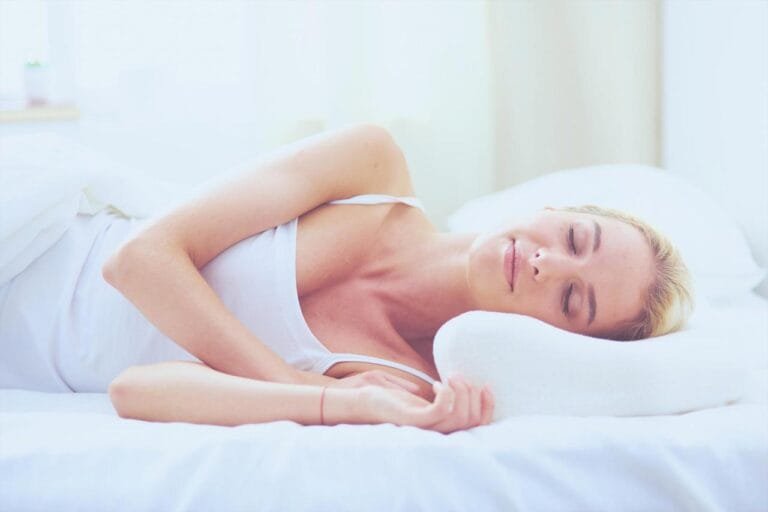A tension headache is a frequent side effect of everyday life, but it’s not easy to get rid of one. Pressure point or trigger point massage is one approach to relieving a headache. Let’s look at those pressure points and how they function for headaches. To ease tension headaches, I’ll also add some stretches that you may practice as part of your everyday routine.
What are pressure points, and how do they work?
Pressure points are bodily sites that, when handled, may create pain or stimulate healing in other regions of the body. These pressure points are commonly shown in detailed hand maps in reflexology, but they exist all over the body in physical therapy and assist in clinical massage.
It may sound strange, but massaging one portion of the body can help alleviate stress in another. After all, even those knobby knots in your shoulders are related to the rest of your body! So, if you’re attempting to ease discomfort in your brain, expand your concentration to include other parts of your body.
Introducing Trigger Points and Pressure Points in Headache Pain
A pressure point is a center of tension in the body that responds to pain and touch. Tension builds when a muscle group is overused, forming “trigger points”—knotted myofascial tissue.
It might be unpleasant when you press on these trigger points, and you might assume the muscle is being strained. On the other hand, trigger points are frequently a sign that a neighboring muscle group is overworked. A nasty knot in your upper trapezius (at the top of the shoulder), for example, might lead you to believe your shoulder muscles are strained. On the other hand, this knot is more likely to signify strained or “over-lengthened” neck muscles.
Trigger points are givers and takers, receiving tension from overused areas and referring pain to surrounding areas. Let’s imagine the source of the problem is your neck muscles, which have been over-lengthened due to maintaining a forward head posture all day. You have a tight upper trapezius trigger point and a dull tension headache near the base of your skull.
Your posture, the tender points in your shoulder, and your headache are probably all connected. Although bad posture is most likely to blame, you’re more likely to hunch when you’re in pain, exacerbating the problem and extending your headache!
Headache Relief by Releasing Pressure Points
The good news is that, while pressure points are pain hotspots, they may also provide relief. The radiating agony you experience in your head, behind your eyes, and even across your arms and fingers can be relieved by massaging these trigger points.
Tender Points vs. Trigger Points: What’s the Difference?
You may be familiar with the term “sensitive points” and wonder if they’re the same as trigger points if you’ve visited a physical therapy center.
Tender pots hurt when you touch them, but they aren’t knots. A physical therapist would commonly treat sensitive spots with a strain/counter strain technique, which involves physically contracting and relaxing stiff muscles to decrease tension and discomfort. While strained muscles cause both in the area, a sensitive point does not refer to pain as a trigger point.
If you have fibromyalgia, you may have several sore spots. If your problem is persistent tension headaches, focus on trigger points, which may be identified in a few pressure point regions.
pressure point locations
Trigger points and referred pain are common at pressure points in the head, neck, and shoulders, similar to the dull headache you carry home from work every day. Let’s look at these three key pressure locations for headaches in more detail.
Suboccipital Trigger Point Number One
Your suboccipital muscles link your head and neck at the base of your skull. They are in charge of head flexion-extension, and rotation.
Because these muscles are so tiny, they are prone to overuse. By gazing upward or to the side too much, or, more typically, by maintaining a forward head position, you might strain your suboccipital muscles.
This region’s trigger point tension frequently generates discomfort in the temples, sides of the head, and behind the ear, contributing to a headache.
- The temporalis activation point
The temporal muscles, which govern the jaw, are located on each side of your head. This flat muscle is more extensive than it appears, holding four trigger points.
Discomfort in the temples and radiating pain in the front and back teeth are caused by a tight temporalis. Vertigo and jaw discomfort, particularly TMJ (temporomandibular joint) conditions, can be aggravated by temporalis trigger points. Tension headaches on the sides of the head and above the brow are common in those with a temporalis trigger point.
A temporalis trigger point is caused by chewing gum, clenching teeth, and continuous tension. This tension can be relieved with targeted massage and lifestyle adjustments and simply relaxing the neck and shoulders.
- Upper trapezius trigger point
The trapezius is a big trapezoidal muscle that runs from under your shoulder blades to your neck. Because of its immensity, this muscle is involved in virtually all head, neck, shoulder, and upper back motions – which is, of course, where all incorrect posture occurs.
One of the most common trigger sites is found above the collarbone, along with the upper trapezius muscle. The trapezius is particularly vulnerable to muscular strain and poor posture. As a result, pain is referred to the neck, mouth, head, and arms by these trigger points.
Although it might be challenging, massaging certain pressure spots can help relax a strained trapezius. Correcting improper postures, such as rolling shoulders and a forward head, is best to avoid trapezius trigger points.
Pressure Point Massage for Headache Relief: Research
According to traditional medicine, people have been rubbing pressure points for headache treatment since antiquity. However, controlled investigations have recently shown the impact of massage on tension headaches.
Neck and shoulder massage can assist people with chronic tension headaches to lessen the frequency and duration of their headaches. Massage that focuses on trigger points in the neck and shoulders might also help to relieve headache discomfort.
Massage along the upper-body trigger points can improve neck range of motion while reducing headaches and stress.
Importantly, these studies found that massage treatment had only short-term advantages, so it’s not a long-term solution. Poor posture, which may be leading to the establishment of trigger points and transferred pain, is the best way to prevent tension headaches.
Massage Techniques for Trigger Points
Your hands are your finest tools for working out the knots in your upper trapezius, suboccipital, and even temporalis. Apply continuous pressure to a trigger point until it softens and a release of tension is felt.
While massaging, keep your head and neck relaxed. While resting on your back, the optimum posture for massaging your suboccipital is to keep your head supported and give those little neck muscles a rest. Try massaging your temporalis while lying down, keeping your jaw free and relaxed.
Because the trapezius is a much bigger, thicker muscle, massage tools may benefit. A tennis ball or a lacrosse ball will do the trick. Simply roll it beneath your back, pressing the ball into your trap where your trigger points are, with the help of the ground. If this is too much for you, lean against a wall and lean on the ball from there.
The foam roller is another fantastic tool for providing consistent pressure to trigger points. You’d use it in the same way you’d use a tennis ball but across a larger region of your back.
Following up on loosening the knots and releasing these trigger points with moderate stretching is always a good idea.
Stretches to Prevent Tension Headaches
Regular massage and stretching practice can relieve the most severe tension headaches. Just be aware of any shooting pain or discomfort in your neck, and ease off on the stretch if necessary.
Stretching the upper trapezius.
A simple upper trap stretch might help relieve any tension built up in your trapezius trigger points.



